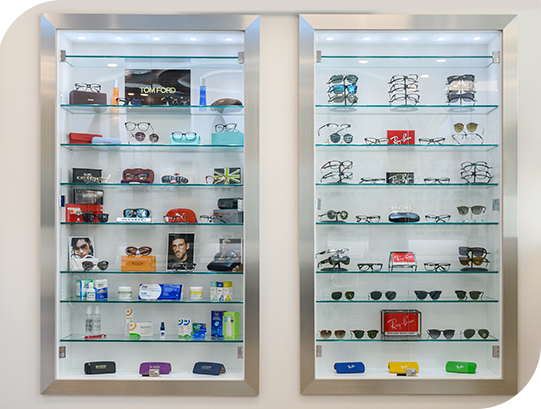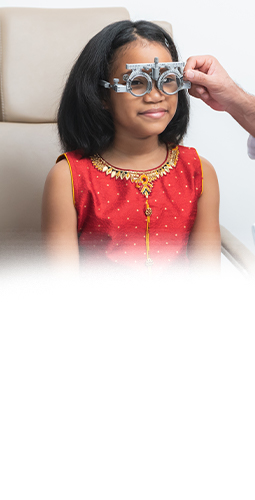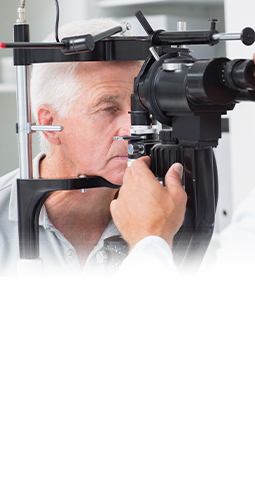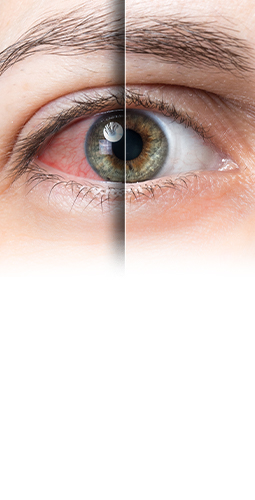Keeping the Future Clear with Modern Myopia Control
The prevalence of myopia is increasing with each passing year. According to current studies, it is projected that by the year 2050, more than 50% of the global population will be affected by myopia.
In 2021, the World Council of Optometry (WCO) passed a resolution publicly declaring support for myopia management as the standard of care.
Myopia, commonly known as nearsightedness, is more than just a visual inconvenience. It’s a progressive condition that can lead to permanent eye health and vision concerns—now and in the future.
Progressive myopia isn’t just about high prescriptions. The large axial length increases the risk of many diseases like retinal detachment, glaucoma, cataracts, and myopic maculopathy.
The good news? It’s never too early to get help managing your child’s eye development. By acting now, we can help preserve your child’s clear vision with modern techniques and strategies.
Start by booking your child’s next eye exam at Seaton Vision Care. We’re here to serve your family any way we can.
Book Appointment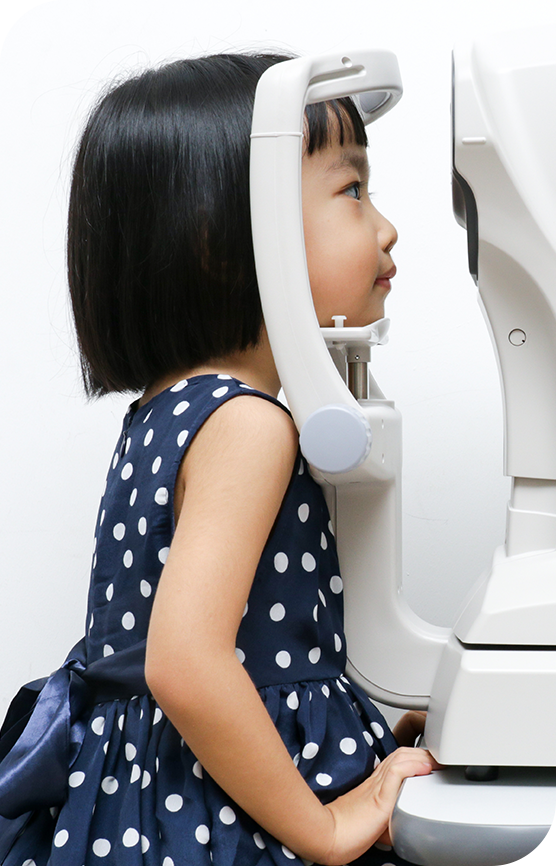
What Is Myopia?
Myopia, or nearsightedness, is a refractive condition that can affect your ability to see distant objects. It occurs when your eye grows too long or your cornea (the clear window at the front of your eye) is too steep, causing light entering your eye to focus in front of your retina.
When you have myopia, your distance vision can get blurry—and over time, the effects of myopia can get worse.
Why Is Myopia Control Important?
A significant reason why managing myopia is essential is the age at which it develops. Myopia typically develops during childhood between the ages of 6 and 7 but can continue progressing until age 20.
If left unmanaged, myopia may affect your child’s future eye health and quality of life by making their blurry vision worse and increasing their lifetime risk of other eye problems.
Prescription Lenses May Not Be Enough
While prescription glasses and contact lenses are common for correcting myopia, they do not address the underlying condition. In fact, myopia can still progress over the course of years, gradually changing your child’s lens prescription as they grow.
At Seaton Vision Care, we focus on control and prevention, not just correction.
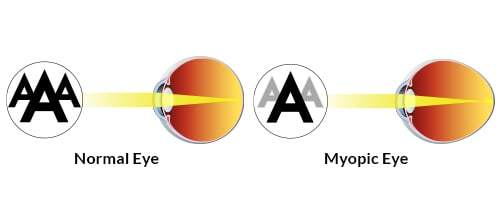
High Myopia Risks
Without intervention, myopia can become high myopia and may increase the risk of your child developing certain eye diseases and conditions later in life, including:
- Cataracts (17% more likely)
- Glaucoma (Nearly 50% higher)
- Myopic maculopathy (Rises with age and increasing myopia)
- Retinal detachment (5 or 6 times greater in people with high myopia)
Myopia progression can also affect your child’s ability to enjoy extra-curricular activities like sports and succeed at school.
Myopia Control Methods
We are dedicated to remaining at the forefront of myopia control strategies and always adopting effective new approaches as they become approved. The first step to supporting your child’s sight is to have them visit us for a comprehensive eye exam, where we’ll assess their needs and preferences to develop a personalized strategy.
Myopia management isn’t just a yearly transaction. We enroll our patients in our program and regularly follow up with them (every 3-6 months) to monitor their Axial length and prescription closely.
Some of our featured myopia control methods include:
- MiSight & Abiliti Soft Contacts: These contact lenses use multiple prescription zones to help slow the elongation of the eye that leads to myopia.
- Myopia Control Spectacle Lenses: We offer spectacle lenses for myopia control that help manage light entering the eye, potentially helping to reduce the need for stronger prescriptions over time. We offer MiYOSMART lenses, MyoCare lenses, Stellest, and Cooper vision’s MiSight spectacles.
- Atropine Drops: Low-dose atropine drops help by suppressing the eye’s growth to slow myopia progression. This treatment is typically prescribed as a daily drop, administered in the evening before bedtime.
Through our commitment to staying up-to-date with modern research and developments, Seaton Vision Care is here to support all your family’s eye care needs.
Axial Length for Myopia Control
At Seaton Vision Care, we prioritize your child’s visual health. We offer axial length measurement, a powerful tool for myopia management. Axial length is its front-to-back measurement. In healthy eyes, this grows naturally. But in myopic eyes, it can accelerate, increasing the risk of vision problems later.
By monitoring axial length, we can work with you to create a personalized plan to slow myopia progression and help your child see clearly, now and later.
Why Axial Length Matters
Axial length goes beyond a prescription. Here’s how:
- Early Detection: Even with a stable prescription, abnormal growth can indicate a higher future progression risk.
- Personalized Treatment: We tailor treatment plans based on both prescription and axial length.
- Lifetime Risk Assessment: It helps us assess your child’s potential risk for complications linked to high myopia.
Make an Investment in Your Child’s Future
Myopia control is a long-term investment that could offer lifelong returns for your child through clearer vision and healthier eyes.
The best time to act is early in your child’s life—before myopia has a chance to progress. Book an appointment with us at Seaton Vision Care today, and let’s start navigating a path toward a clear future for your child together.
Book AppointmentOur Location
Visit our practice near the Duffin Heights neighbourhood in north Pickering. You can find us in the Seaton Centre, the shopping center off Brock Road and Palmers Sawmill Road.
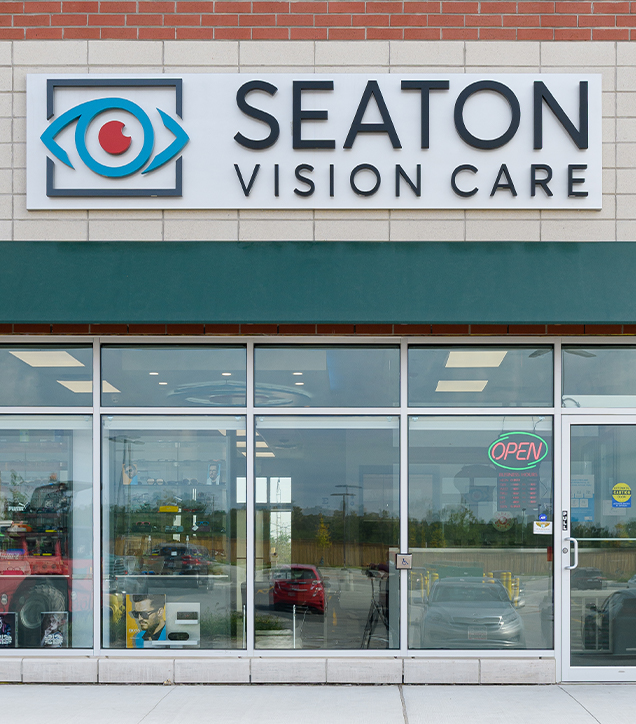
Our Address
- 2460 Brock Rd, Unit C7
- Pickering, ON L1X 0J1
Contact Information
- Phone: 905-428-3330
- Fax: 905-428-2010
- Email: [email protected]
Hours of Operation
- Monday: Closed
- Tuesday: 11:00 AM – 7:00 PM
- Wednesday: 11:00 AM – 6:00 PM
- Thursday: 11:00 AM – 7:00 PM
- Friday: 10:00 AM – 5:00 PM
- Saturday: 10:00 AM – 5:00 PM
- Sunday: Closed
*Closed on Saturday on long weekends
Our Services
Our Brands



